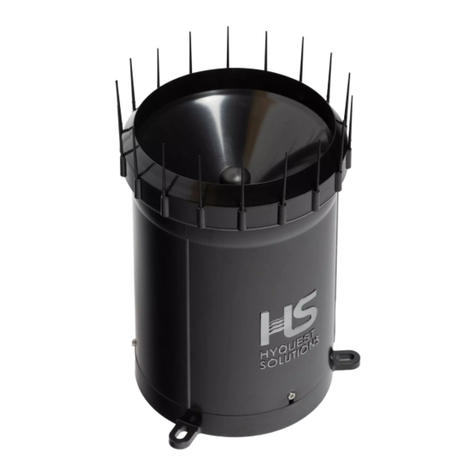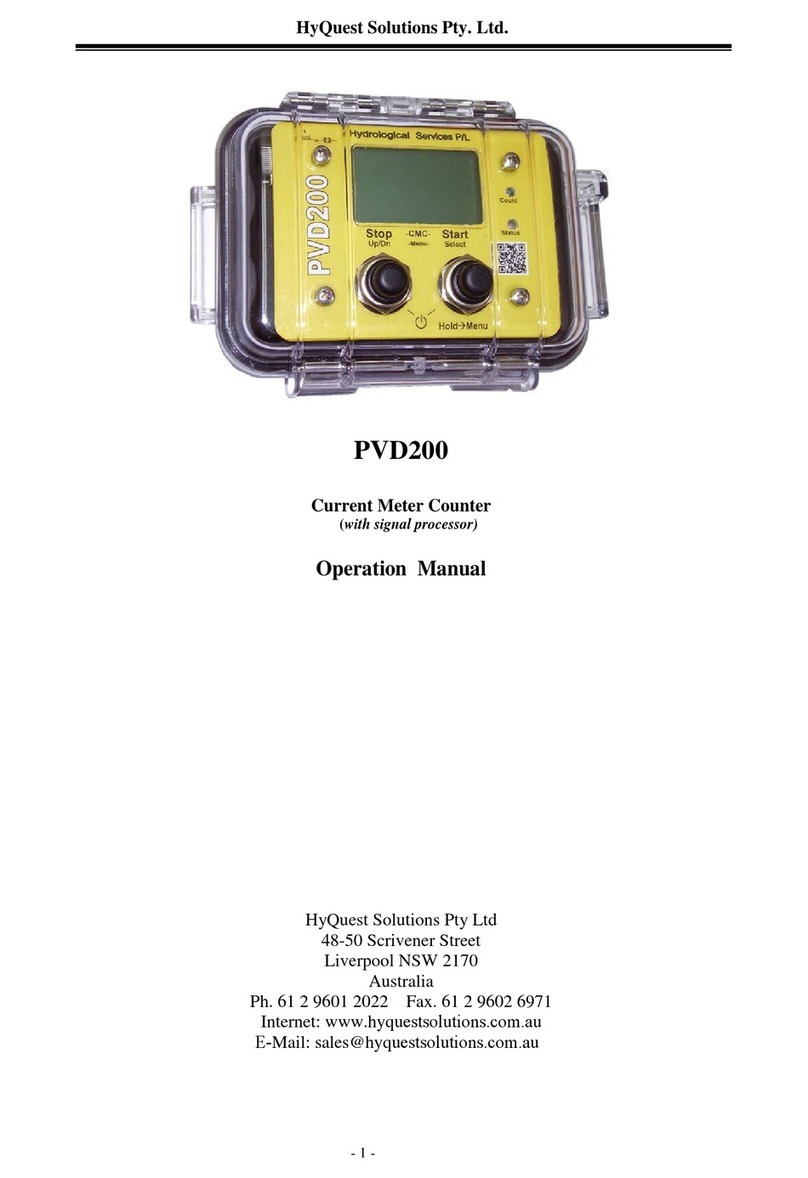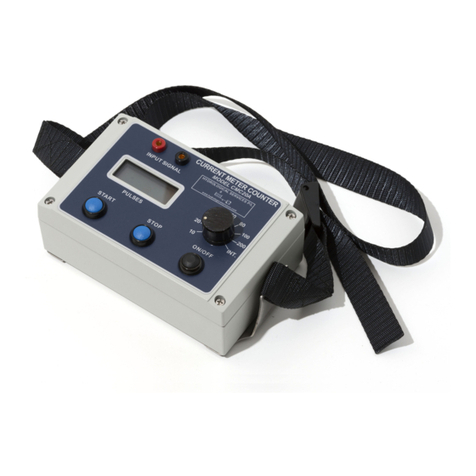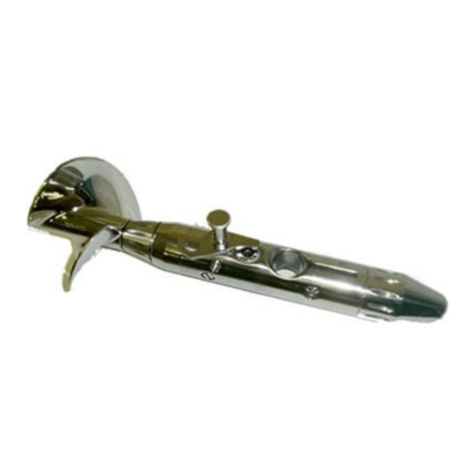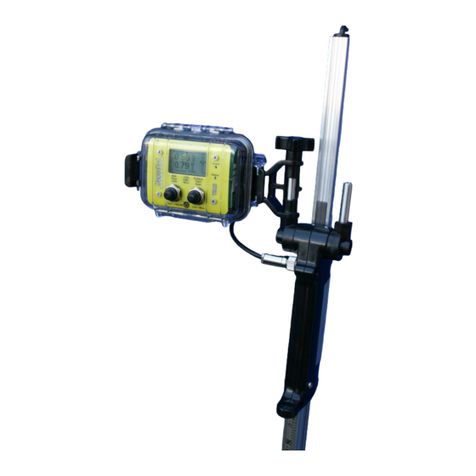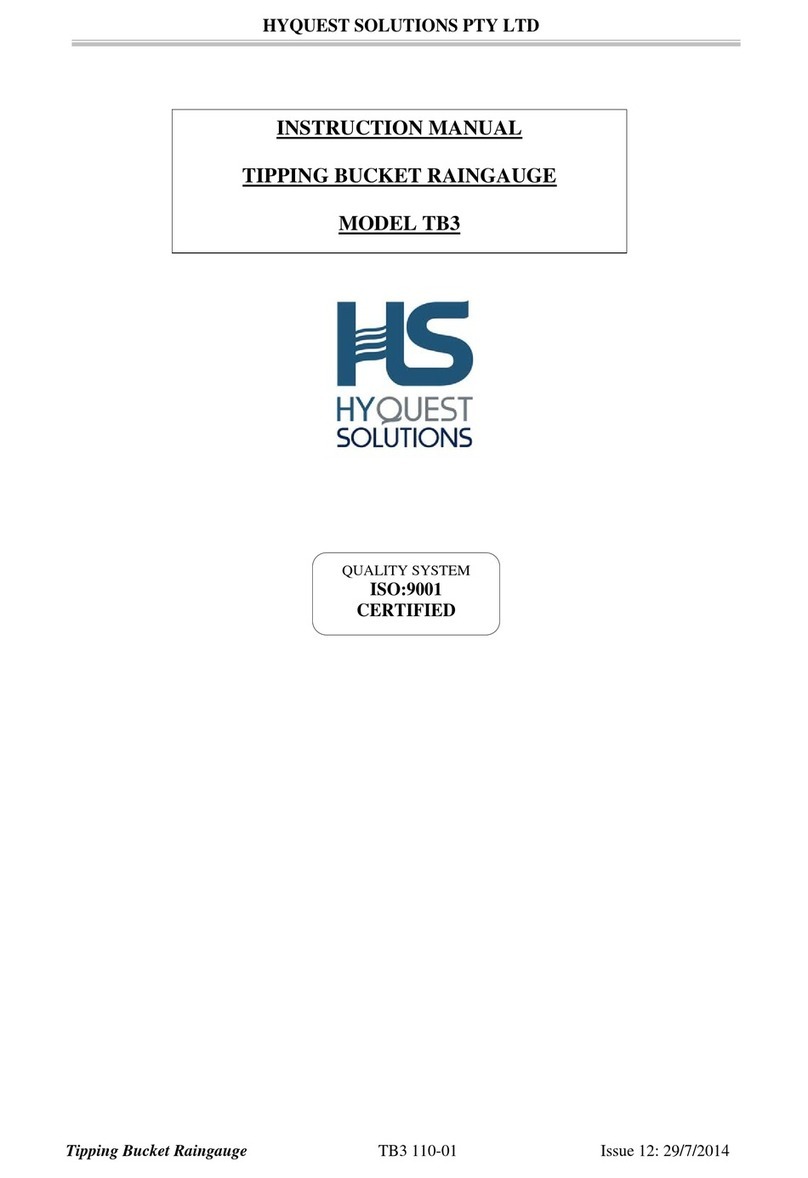
© 2022 HyQuest Solutions 5
Introduction
1Introduction
Thank you for choosing our product. We hope you will enjoy using the device.
HyQuest Solutions manufactures, sells, installs and operates quality instrumentation, data loggers and communication
technology. Products are designed with passion for environmental monitoring and with a deep understanding of the
quality, accuracy and robustness needed to fulfil the requirements of measurement practitioners in the field.
The present User Manual will help you understand, install and deploy the device. If, however, you feel that a particular
information is missing, incomplete or confusing, please do not hesitate to contact us for further support!
The HS40 Compact Gas Purge Compressor + Bubbler System has been designed to replace a conventional nitrogen gas
bottle supply to a bubble unit/gas purge system, used for measuring water level in dams, rivers, canals and tanks with
up to 40 mH2O (130 ft) head with a maximum river-line length of 200 m (650 ft). (Note: 50 mH2O (160 ft) available on
request)
The basic system consists of an air compressor, a 0.75 litre receiving tank, an advanced membrane dryer, micro mist
separator (with optional V-series auto purge valve for the micro mist separator), a highly reliable mechanical
differential bubbler system, bubble rate check function, high quality Australian made compressor pump packaged into a
small but robust metal enclosure. The system incorporates a mechanical pressure switch to maintain a 400kPa (58 psi)
- 750 kPa (110 psi) tank pressure to ensure powerful river line purging during site visits.
The HS40 Compact, with the optional inbuilt WL3100 pressure transducer, allows the measurement of water level to an
accuracy of ±0.02 % F.S. (The WL3100A is an advanced model that allows the fine tuning of the “user factor”
relationship between pressure and water level, and is temperature compensated from -40 °C to 80 °C) The inbuilt
WL3100 / WL3100A have an SDI-12 interface and a 4 - 20 mA interface that can be used at the same time to provide
data to 2 separate systems if required.
Advantages over other systems:
§
Compact single unit.
§
Low maintenance (no gas bottle or desiccant to be replaced) two stage air drying system incorporating micro-mist
separator and self-purging membrane dryer to ensure clean dry air is available in all conditions. A yearly check of
the internal filter element is recommended, however up to three years before replacement is possible depending on
site conditions. (Low cost replacement elements can be purchased from HyQuest Solutions when required.)
§
Can interface WL3100 to SDI-12 and 4 - 20 mA outputs simultaneously.
§
Easy to install.
There are various models available:
Includes compressor tank air dryer bubbler.
Compressor/bubbler above with inbuilt 2100 pressure transducer.
Compressor/bubbler above with inbuilt WL3100 pressure transducer.
